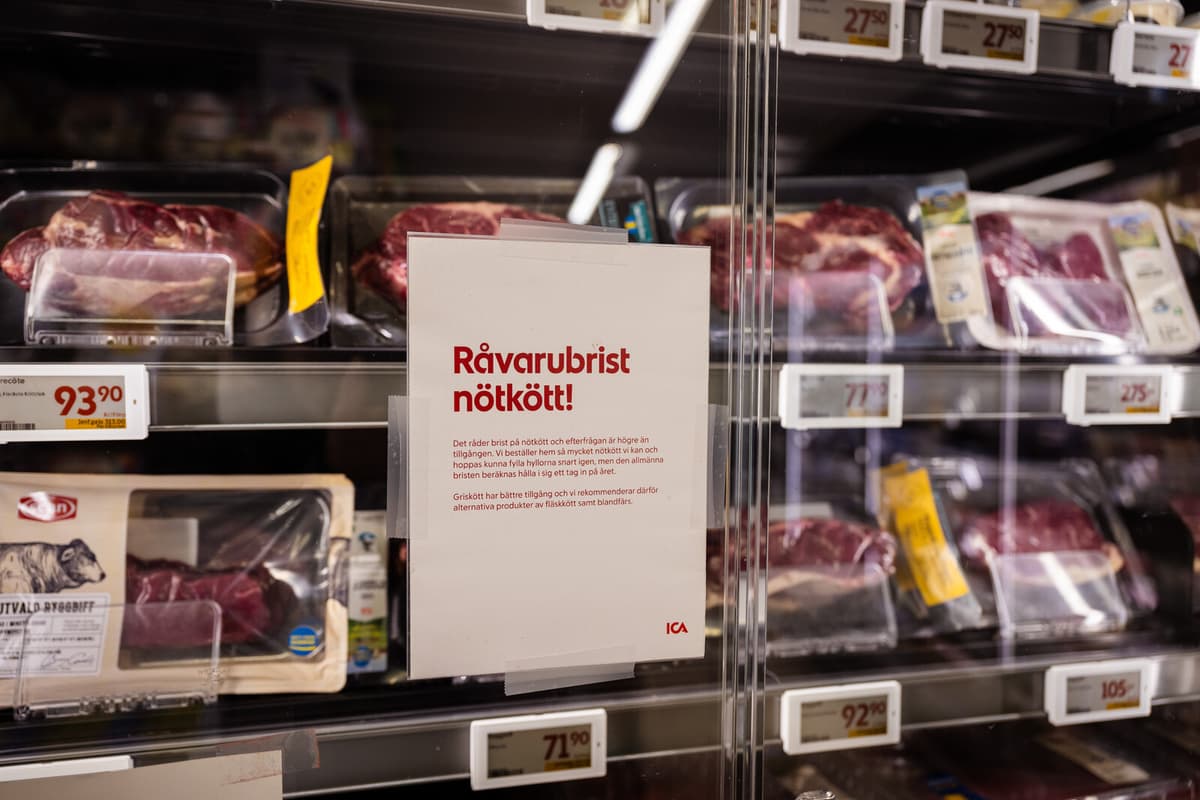Alarms from food stores and farmers about the shortage of Swedish beef have been recurring. It is no coincidence, according to Anna Hessle, associate professor at the Swedish University of Agricultural Sciences.
It is a shortage in relation to what people want to buy – people want to buy Swedish beef but it is not available in the store. At the other end, the slaughterhouses are competing for the slaughter animals that exist, and are outbidding each other with higher prices.
Swedish beef can meet just over half of Sweden's demand. The rest is foreign beef, mainly from Europe, where it is also a scarce commodity.
At the same time, the Swedish Board of Agriculture's latest annual figures show a slightly increased slaughter in Sweden. But Anna Hessle attributes this to an increased slaughter of heifers and cows, which is due to farmers quitting or no one wanting to buy the animals.
The female animals that are slaughtered today could have a calf next year, but those calves will not be born, and then we will have a shortage in three years.
Has been built up over the years
Cows are pregnant for almost a year and depending on what the calf is to be used for, it takes different lengths of time before the animal is slaughtered. Therefore, the shortage may become greater in the coming years.
Something must be done to reverse the trend. Overall, this is a long-term business, says Anna Hessle.
The explanation for the shortage goes back several years. Many animals were slaughtered after the extreme heat in 2018. Then came cost increases with the pandemic and the war in Ukraine. Food prices have risen since then, but for a long time, revenues have not covered expenses.
The industry organization Swedish Meat points out that it has made it difficult for generational changes, where some farms have been wound up instead. The meat shortage is also due to reduced milk production.
This has led to fewer calves and thus also reduced meat production, says CEO Isabel Moretti.
Eat offal
She gets support from Anna Hessle on the need for farmers.
What we need to maintain volumes is to get new farmers. It is the farmers who are the scarce commodity.
In times of meat shortage, Swedish Meat is working for the food of the future, where Isabel Moretti urges to eat more of the animal.
We have been quite spoiled, so to speak, that we can choose what we think is good or not. Compared to other countries, we do not eat much offal, for example – are there things we can do, can we have a more modern way of cooking offal?
Offal, also called innards, includes, among other things, liver, heart, tongue, and kidney. The consumption of offal varies between different food cultures. For the environment, it is better if more parts of the animal are eaten so that the whole animal can be utilized.
Both offal and blood are very nutritious. For example, blood contains more protein and 25 times more iron than a ribeye.
There are several traditional dishes within Swedish home cooking that contain offal. These include blood pudding, lung pudding, pölsa, blood sausage, liver sausage, and meat cake.
Source: Swedish Meat, Smaka Sverige, National Food Agency





